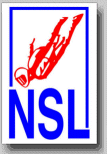
National
Skydiving
League
226 Pecan Street
Deland FL 32724
tel: (386) 801-0804
© 2003 - 2024
All Rights Reserved


226 Pecan Street
Deland FL 32724
tel: (386) 801-0804
© 2003 - 2024
All Rights Reserved

NSL News Coverage of the FAI Indoor World Cup 2024 |
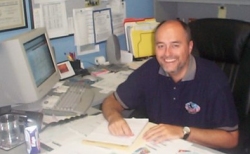
In early 1999, when former U.S. President George Bush, Sr., was considering adventurous ways that he could celebrate his upcoming birthday, the WWII veteran pilot settled upon something bold for a man about to turn 75: He would go skydiving. But how could he safely practice for the event without actually jumping out of an airplane? The answer came in the form of a remarkable new skydiving attraction in Orlando, Fla., called SkyVenture. “He was encouraged to come to our Orlando location by the U.S. Parachute Association, which was familiar with us,” says Bill Kitchen, founder of SkyVenture. So, in February 1999, President Bush trained in the simulator, and SkyVenture proudly displays photos of his visit on a wall in its Orlando office.
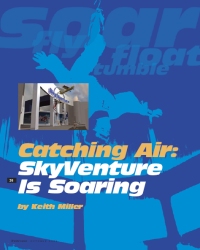
This skydiving simulator occupies a special place in the realm of adventure amusements, and its burgeoning appeal has SkyVenture soaring. The companyowned simulator in Orlando had revenues of $2.5 million in 2003, with a 36 percent profit margin. Additionally, SkyVenture has tunnels operating under license agreements in Perris, Calif., and Kuala Lumpur, Malaysia, and purchase contracts for tunnels in Las Vegas, Houston, Denver, Dallas, Trenton, N.J., Phoenix, San Francisco, Nashua, N.H., and Raeford, N.C. The company’s success has spurred interest internationally as well, with additional simulators under contract in Glasgow, Milton Keynes, England, Sydney, Madrid, Abu Dhabi, and Moscow.
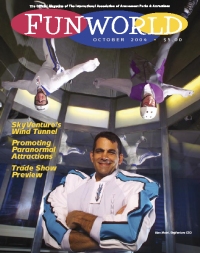
Metni also revealed that he’s currently working with the Mills Corporation, owner/developer of numerous large retail centers, on placing a SkyVenture tunnel in the enormous $1.3 billion Xanadu shopping and entertainment center planned for the Meadowlands sports complex in New Jersey. “Mills is pushing real hard toward 'shoppertainment'. They create these massive shopping malls that have roller coasters, simulators, etc.,” Metni observes. “They’re excited about Skyventure because not only is it captivating to watch, but many spectators ask to fly themselves, and they wind up spending more hours wandering the shopping complex—what Mills calls ‘dwell time’—while waiting for their scheduled flight time.” Mills wants to place SkyVenture tunnels in 20 shopping complexes.
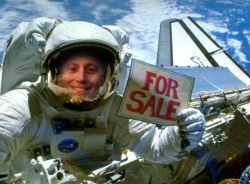
Then along came Kitchen. An innovator of extreme amusement attractions — including the Skycoaster, of which he sold more than 100 worldwide — Kitchen has a love of skydiving and wanted others to experience it “without having to jump out of a perfectly good airplane.” He began working on the idea in 1994 but quickly discovered that the existing tunnel technology was deficient for his purposes.
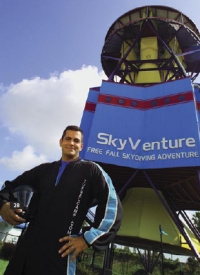
In the summer of 2000, Metni was on the coast of Florida at a skydiving competition when a hurricane warning forced him inland. “I wound up at a motel next to SkyVenture, so I went over there to check it out. I figured it would be like other skydiving simulators I’d seen, with dead zones, but it was completely different—it was exactly like free fall.” He later approached Kitchen about purchasing a tunnel, but right before the deal was to close in 2002, Kitchen suggested that Metni join SkyVenture, and he agreed. Then in May of this year, Metni bought Kitchen’s interest in SkyVenture and is now sole owner.
What sets the SkyVenture wind tunnel apart from its predecessors is that instead of having one enormous, diesel-powered fan operating beneath the flight chamber, it utilizes multiple electric fans placed above the chamber. “This creates a vacuum, and the air is not blowing over the fan tips and the housing before it reaches the flyer,” explains Metni, “and thus the airflow is much smoother, like free fall. You wouldn’t think it would matter to the amusement customer, but it does because in the old-style tunnel, it’s hard to maintain your position and stay in the air column.” Regarding safety, Metni points to the real experts. “Our insurance carrier tells us it’s one of the safest rides they’ve ever had.”
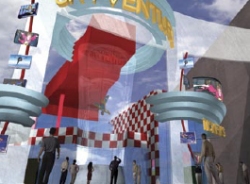
The entire SkyVenture experience takes about an hour. When flyers arrive at the facility, they fill out a waiver, take a training class with their flight group, and watch a short video. They then suit up in flight gear and proceed to the tunnel staging area where each person flies for about two minutes. Flyers range in age from three to 95, with a maximum weight of around 255 pounds, and the only size requirement for children is that they properly fit into one of the flight helmets. The only health limitation is that flyers must not have had multiple shoulder dislocations.
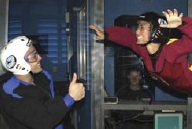
The cost to fly at the Orlando location is $38.50 for adults and $33.50 for children, and group rates are available. This may seem pricey, and Metni acknowledges that some guests might question the cost, but he adds, “Two minutes of flight time is equal to two sky dives, which costs around $450. We’ve learned over the years from Skycoaster, which charges about the same, that it works. We’re in a highly competitive market, yet it’s doing very well.”
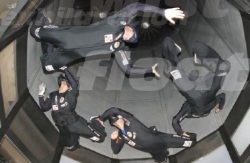
According to Kitchen, SkyVenture began licensing its product to buyers once it had developed a track record. “We started a couple of years ago after we proved it was safe, profitable, and reliable to operate,” he says. The company now has more than 20 tunnels in operation or under contract. Whether a tunnel will be used primarily by amusement guests, sky divers, or military personnel depends largely upon its location and the desires of the individual owner.
Tim D’Annunzio, owner of the Raeford, N.C., simulator and president of Paraclete Armor in nearby St. Pauls, is a sky diver and, like Metni, was impressed with the SkyVenture tunnel when he first experienced it. “I’ve used vertical wind tunnels for years, but none ever accurately simulated free fall, until this one.” He expects about 20 percent of his business to be amusement guests and intends to lease a lot of time to Fort Bragg army base.
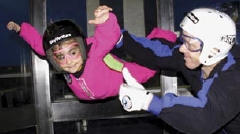
SkyVenture offers buyers two kinds of tunnels—open and recirculating—in three different sizes—10-foot, 12-foot, and 14-foot, with the biggest seller being the 12-footer. The open tunnel brings air in the bottom and blows it out the top, while the recirculating model is a closed loop and recirculates the discharged air. “We put the recirculating tunnel in cold-air climates, and this allows us to function in any weather and operate quietly,” remarks Metni.

SkyVenture credits several factors, including the fact that its tunnels use electric-powered fans rather than diesel, for its relatively low maintenance downtime. “We were down only 70 hours in 2003, which is just over one percent of our operating hours,” pronounces Metni. The tunnels demand between .5 and 1.3 megawatts of electricity, and Metni says the power cost is about 10 percent of gross revenue. Metni is confident about the future of SkyVenture and sees more improvements on the horizon. “Honestly, I see clear sailing. There are others hoping to do what we’ve done, but no one’s even close to this. Our patents protect our key elements, which is what makes the tunnels safe. The Orlando tunnel is basically a dinosaur compared to what we’re doing now and what’s coming. We’re moving toward lighter, shorter, more energy efficient, and more visible.”